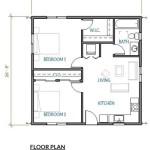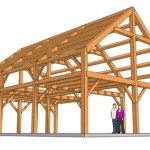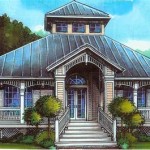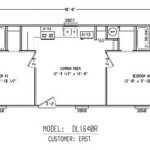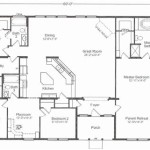Modern House Plans Under $200k To Build
The dream of homeownership remains a significant aspiration for many individuals and families. However, the rising costs of construction and real estate can often seem insurmountable. Fortunately, it is possible to achieve the goal of owning a modern home without exceeding a budget of $200,000. This requires careful planning, strategic design choices, and a focus on efficient building practices. Achieving this goal involves navigating several key factors, including location, design complexity, material selection, and labor costs.
This article explores the various considerations and options available to those seeking modern house plans that can be built for under $200,000. It will cover strategies for cost-effective design, material selection, construction techniques, and ways to maximize space efficiency. Understanding these aspects is crucial for successfully navigating the building process and realizing the dream of affordable modern homeownership.
Location and Lot Considerations
The geographical location of the building site is a primary factor impacting the overall cost. Land prices vary dramatically depending on the region, proximity to urban centers, and the availability of utilities. Rural or suburban areas generally offer more affordable land options compared to densely populated urban areas. When searching for a suitable lot, potential buyers should consider the following:
Accessibility to infrastructure, including water, sewer, electricity, and internet. Connecting to existing utilities can be significantly cheaper than installing new systems, especially in more remote locations.
Zoning regulations and building codes, which dictate the types of structures permitted and the standards that must be met. Variance requests can add both time and cost to a project.
Soil conditions and topography, which can influence foundation costs. Sites with unstable soil or steep slopes may require more extensive and expensive foundation work.
Proximity to essential services, such as schools, hospitals, and grocery stores. While prioritizing affordability when choosing a location is key, the added costs of extensive travel to access necessities should be calculated.
Property taxes, which can vary significantly between different jurisdictions and impact the long-term cost of ownership.
The size and shape of the lot also play a role. A rectangular lot is typically easier and more cost-effective to build on than an irregularly shaped lot. Smaller lots may necessitate a more compact house design, which can actually be beneficial for reducing construction costs and energy consumption.
Cost-Effective Design and Planning
The design of the house itself is a critical determinant of the building cost. Simple, rectangular designs are generally less expensive to construct than those with complex angles, curves, or multiple levels. Minimizing the footprint of the house can also significantly reduce foundation and roofing costs. Some key cost-saving design principles include:
Prioritizing functionality over elaborate aesthetics. Focus on creating a comfortable and efficient living space without unnecessary ornamentation or architectural complexities.
Opting for an open floor plan. This reduces the need for interior walls, saving on materials and labor. It also creates a more spacious and modern feel.
Choosing standard window and door sizes. Custom sizes are significantly more expensive. Standard sizes also allow for easier replacement and maintenance in the future.
Designing for energy efficiency. Incorporating features like proper insulation, energy-efficient windows, and passive solar design can reduce long-term operating costs and potentially qualify for rebates or tax credits.
Planning for future expansion. If budget constraints limit the size of the initial build, design the foundation and structure to allow for future additions or modifications.
Selecting a pre-designed house plan. Many companies offer a wide range of modern house plans that are designed for efficiency and affordability. These plans often include detailed construction documents, which can save on architectural fees.
Careful planning and attention to detail are essential during the design phase. Working with an experienced architect or designer can help identify potential cost savings and ensure that the design meets both the budget and the desired lifestyle.
Material Selection and Construction Techniques
The choice of building materials significantly impacts the overall cost. Selecting affordable and readily available materials is essential for staying within budget. Consider the following material options:
Framing: Wood framing is typically the most cost-effective option, especially for smaller homes. Exploring alternatives like steel framing may increase upfront costs, potentially offering long-term durability or energy efficiency benefits, but these need careful assessment.
Siding: Vinyl siding, fiber cement siding, and engineered wood siding are all relatively affordable options that offer good durability and low maintenance. Brick or stone cladding can add to the aesthetic appeal but significantly increase the cost.
Roofing: Asphalt shingles are the most common and affordable roofing material. Metal roofing offers greater durability and longevity but comes at a higher price.
Flooring: Laminate flooring, vinyl flooring, and polished concrete are cost-effective options that are also durable and easy to maintain. Hardwood flooring and tile can add to the aesthetic appeal but significantly increase the cost.
Interior Finishes: Using simple and cost-effective finishes, such as drywall with paint, can save a significant amount of money. Avoid elaborate trim work or custom cabinetry to keep costs down.
In addition to material selection, the construction techniques used can also impact the overall cost. Simple and straightforward construction methods are generally more affordable. Consider the following:
Building on a slab foundation. Slab foundations are typically less expensive than crawl space or basement foundations, especially in areas with stable soil.
Using prefabricated components. Prefabricated walls, roof trusses, and even entire modular homes can significantly reduce construction time and labor costs.
Owner-builder approach. Acting as the general contractor and managing the construction process can save on contractor fees. However, this requires significant time, knowledge, and organizational skills.
Negotiating with subcontractors. Obtaining multiple bids from different subcontractors and negotiating prices can help reduce labor costs.
By carefully considering material selection and construction techniques, it is possible to build a quality modern home without exceeding the $200,000 budget.
Maximizing Space Efficiency
When building on a budget, it's crucial to maximize the use of available space. Efficient space planning can allow for a smaller footprint without compromising functionality or comfort. Some strategies for maximizing space efficiency include:
Open floor plans. As mentioned earlier, open floor plans create a sense of spaciousness and reduce the need for interior walls.
Multi-functional spaces. Designing rooms that can serve multiple purposes, such as a home office that can double as a guest room, can maximize the use of available space.
Built-in storage. Incorporating built-in storage solutions, such as bookshelves, cabinets, and drawers, can eliminate the need for bulky furniture and create a more streamlined and organized living space.
Vertical space utilization. Taking advantage of vertical space by using tall cabinets, shelving, and storage solutions can increase storage capacity without increasing the footprint of the house.
Strategic use of natural light. Large windows and skylights can brighten up the interior and create a more open and airy feel, making the space feel larger.
Minimalist design. Adopting a minimalist design aesthetic with clean lines, simple furnishings, and a focus on functionality can create a more spacious and uncluttered living environment.
Outdoor living spaces. Extending the living space outdoors with a patio, deck, or porch can provide additional living area, especially during warmer months.
By focusing on maximizing space efficiency, it is possible to create a comfortable and functional modern home within a smaller footprint and a limited budget.
Building a modern home for under $200,000 is achievable with careful planning, strategic design choices, and a focus on efficient building practices. By considering location, design, material selection, construction techniques, and space efficiency, potential homeowners can realize their dream of owning an affordable and stylish modern home. Thorough research, meticulous budgeting, and a willingness to make informed compromises are essential for success in this endeavor.

280 Houses Under 200k Ideas In 2024 House Plans Farmhouse Building A

280 Houses Under 200k Ideas In 2024 House Plans Farmhouse Building A

Build A House For Under 200k

Modern House Plans Under 200k To Build In 2024 Minecraft Blueprints Designs

Affordable House Plans Home Designs The Designers

Building On The Affordable House Plans Of 2024 Houseplans Blog Com

Single Family Small House Plans Floor Photos

Build A House For Under 200k

280 Houses Under 200k Ideas In 2024 House Plans Farmhouse Building A

Leed Platinum Prefab Homes For Under 200k Designapplause

